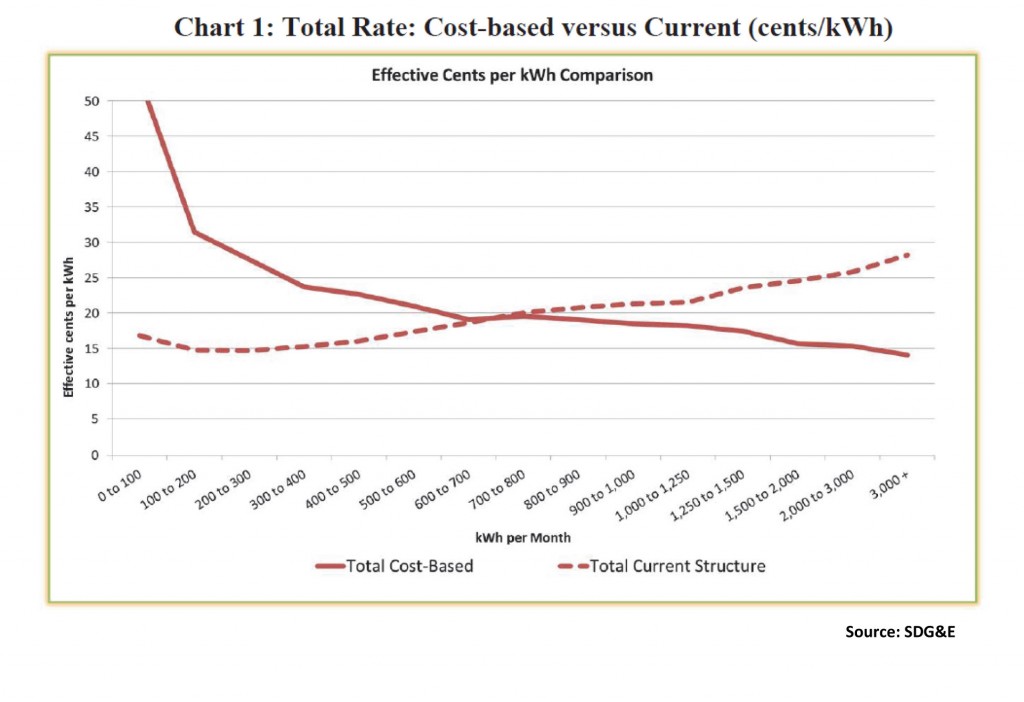The utility industry has launched what amounts to an all-out attack on net energy metering, under which customers receive credit for power they generate on-site and feed back into their utility’s distribution system.
In a report issued earlier this month, the Edison Foundation’s Institute for Electric Innovation (offshoots of EEI, the industry trade association) took aim at the net energy metering program in California, where roughly 120,000 customers (both residential and non-residential) are enrolled in the state’s NEM tariff, and found it, shall we say, lacking.
“The legitimate purpose of a subsidy is to provide an incentive to pursue a desirable public policy. Subsidies should not be overly generous; the amount of the subsidy should be transparent; and the recipient of the subsidy should be clearly identified. As our analysis demonstrates, the current NEM regulatory approach in California fails all three tests,” IEI concluded. The report, Net Energy Metering: Subsidy Issues and Regulatory Solutions, can be found here.
In California’s program, the report continued, “subsidies for rooftop solar PV [photovoltaic] facilities are substantial and far exceed what is necessary to incentivize customers to invest in these facilities.” In addition, IEI noted, the subsidies are not transparent and are difficult to calculate. Finally, in an apparent nod to the little guy, the institute also pointed out that in many cases the majority of the program’s benefits go to the state’s solar leasing companies, and not the utilities’ customers.
The report does in fact raise a number of valid issues that need to be resolved going forward, particularly concerning the services currently provided by utility companies to distributed generation customers at essentially no cost. But the industry’s current concern over net energy metering comes across as self-serving rhetoric since ratemaking subsidies have long been an integral component of the utility industry—but have never sparked much corporate concern.
In the ongoing rate restructuring process in California, for example, SDG&E pointed out in an early filing that roughly two-thirds of the San Diego utility’s electric usage “is priced at a discount’’ while the remaining one-third is “priced at levels substantially above cost.” This structure is an outgrowth of the state’s Enron-induced 2001 energy crisis, but the reality is that for the past 10+ years, higher usage customers have been heavily subsidizing lower usage (but not necessarily lower income) customers and no one in the industry has voiced a peep of protest.
Exactly how out of whack the state’s system has become can be seen by the chart below, which shows that from a cost-based perspective, the utility isn’t charging enough to cover its costs until consumption hits about 700 kilowatt-hours (kwh) a month—or in other words, low usage customers are receiving a substantial subsidy. And in SDG&E’s case that subsidy is being paid for by higher-usage customers (those consuming more than 1,000 kwh a month); they are more than covering what it costs the utility to serve them, enabling the utility to use those extra dollars to cover the shortage from the other customer classes.
Fair? I don’t know, but certainly commonplace.
Just last week, Don Rowlett, managing director of regulatory affairs for Oklahoma Gas and Electric Co., was quoted in the Daily Oklahoman, saying: “A large portion of the fixed cost of providing service in the current rate design is covered in the variable cost.” Meaning that if OG&E’s cost structure is anything close to SDG&E’s, higher-usage customers are subsidizing lower-usage customers.
To its credit, SDG&E said changes are needed to deal with the evolving realities of the utility industry.
“This tiered rate structure is a bundled rate design that fails to distinguish between reliability or standby services and electric commodity services. As a result, while it may have worked in a bundled energy world without meaningful penetration of distributed energy resources and without public policy support for emission reducing actions by customers through the use of behind the meter technologies, this rate design is antiquated today and results in unintended consequences that will not support the state’s public policy objectives in the long-term.”
Going forward, SDG&E said, what is needed are “rates that make sense…[and] reflect the costs associated with the services customers receive. When customers pay for what they get and get what they pay for, they will be far more likely to understand their rates than under the existing tiered mode.”
I couldn’t agree more. But instead of looking to craft “rates that make sense” EEI’s new report simply proposes to add yet another fee on the monthly bill of customers that install distributed generation. “The time to change NEM is now,” EEI concluded, “and regulatory approaches are available to do so.”
That piecemeal approach certainly isn’t a solution that is going to make much sense to ratepayers.
It won’t be easy, but it is time for the industry and its regulators to rethink the ratemaking process (as is happening in California). The tried and true approach of the past is precisely that—of the past. To address a future in which customers will have a plethora of new distributed generation and storage options requires major changes in the current system.
–Dennis Wamsted

 Follow
Follow
One thought on “Time For Utilities
To Rethink
Ratemaking Process”